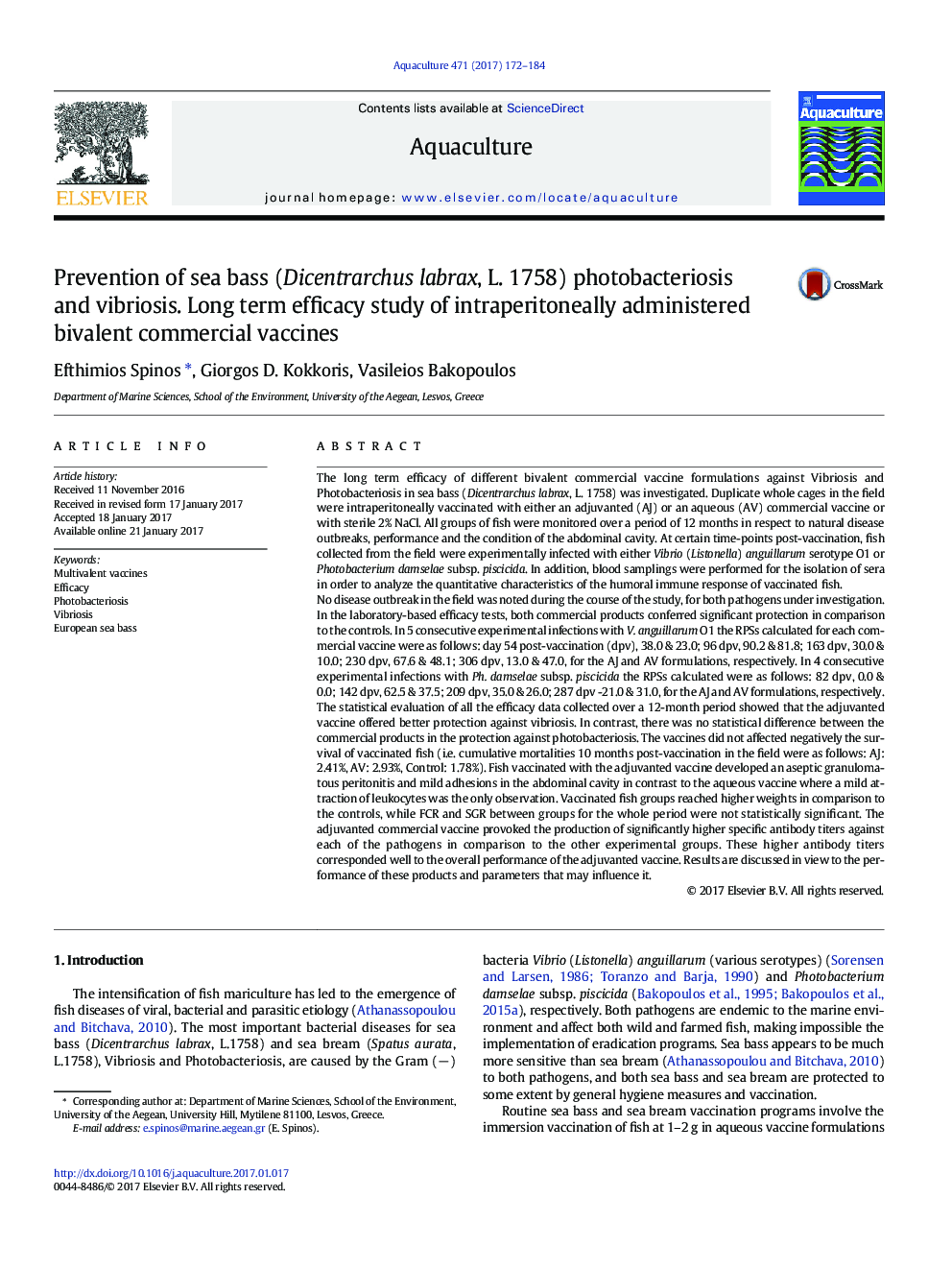| Article ID | Journal | Published Year | Pages | File Type |
|---|---|---|---|---|
| 5539545 | Aquaculture | 2017 | 13 Pages |
Abstract
No disease outbreak in the field was noted during the course of the study, for both pathogens under investigation. In the laboratory-based efficacy tests, both commercial products conferred significant protection in comparison to the controls. In 5 consecutive experimental infections with V. anguillarum O1 the RPSs calculated for each commercial vaccine were as follows: day 54 post-vaccination (dpv), 38.0 & 23.0; 96Â dpv, 90.2 & 81.8; 163Â dpv, 30.0 & 10.0; 230Â dpv, 67.6 & 48.1; 306Â dpv, 13.0 & 47.0, for the AJ and AV formulations, respectively. In 4 consecutive experimental infections with Ph. damselae subsp. piscicida the RPSs calculated were as follows: 82Â dpv, 0.0 & 0.0; 142Â dpv, 62.5 & 37.5; 209Â dpv, 35.0 & 26.0; 287Â dpv -21.0 & 31.0, for the AJ and AV formulations, respectively. The statistical evaluation of all the efficacy data collected over a 12-month period showed that the adjuvanted vaccine offered better protection against vibriosis. In contrast, there was no statistical difference between the commercial products in the protection against photobacteriosis. The vaccines did not affected negatively the survival of vaccinated fish (i.e. cumulative mortalities 10Â months post-vaccination in the field were as follows: AJ: 2.41%, AV: 2.93%, Control: 1.78%). Fish vaccinated with the adjuvanted vaccine developed an aseptic granulomatous peritonitis and mild adhesions in the abdominal cavity in contrast to the aqueous vaccine where a mild attraction of leukocytes was the only observation. Vaccinated fish groups reached higher weights in comparison to the controls, while FCR and SGR between groups for the whole period were not statistically significant. The adjuvanted commercial vaccine provoked the production of significantly higher specific antibody titers against each of the pathogens in comparison to the other experimental groups. These higher antibody titers corresponded well to the overall performance of the adjuvanted vaccine. Results are discussed in view to the performance of these products and parameters that may influence it.
Related Topics
Life Sciences
Agricultural and Biological Sciences
Aquatic Science
Authors
Efthimios Spinos, Giorgos D. Kokkoris, Vasileios Bakopoulos,
